Whenever I had a book report assigned in class as a kid, I remember there was always the temptation to use Cliff Notes—you know, the “cheat-sheet” version of the story that would tell you all the key essential ideas in a fraction of the time it took to read the actual book.
I know I’m not alone when I admit that sometimes, when things were really high-stress and I was overwhelmed, I gave in and used Cliff Notes.
The results always varied, but it could sure feel like a lifesaver when it worked out well…
Sometimes we just need that jumpstart of a quick series of strong ideas to get us through a challenging task.
When it comes to sales, the Cliff Notes-version of learning the best sales training techniques is much harder to come by than a cheat-sheet of a high-school classic novel.
That’s why I’ve put together my own sales Cliff Notes of sorts, so you can learn the basics of sales training at a glance before diving deeper as you go.
In this video, I’m going to share a quick course of powerful sales ideas, including the 7 best sales training techniques. Be sure to check it out:
Best Sales Training Techniques #1: Drop the pitch.

This is so basic, but so important. There’s a reason why I chose this as the number one best sales training technique on this list. If you’re pitching when you get in front of prospects, you’re essentially opening up your suit jacket and showing your prospects all the shiny features and benefits of what you sell, like a true old-school salesperson.
Nowadays, this might look like starting with a slide deck that talks about you and your company, and all the things that make you great. If this sounds like your approach, you’re in trouble.
The walls around your prospects instantly go up when you pitch. Why? Because absolutely no one wants to be pitched. Instead, they simply want to be engaged in a conversation. A real dialogue. That’s when good things start to happen in sales. So drop the pitch and instead seek to engage your prospects in an actual conversation.
Technique #2: Demonstrate insight.

I just mentioned the importance of engaging your prospects in a real conversation, but few salespeople know exactly how to do that. The key is to demonstrate insight that truly engages their attention and makes them see that you have a valuable perspective on their world.
When you demonstrate insight up front in a sales conversation, it makes the prospect think, “This person has shown me some information that actually makes me want to hear more of what they have to say.” And then they’ll hop on that call or Zoom with you.
Insight is the absolute best way to start the sales conversation, period. That’s how you can most effectively engage any prospect. Don’t give them information on your company or your offering, but rather share genuine industry insight that you’ve come across in your dealings with people as a salesperson.
As a tuned-in salesperson, you have a level of expertise that can be leveraged to start high-quality conversations with high-level prospects. Your bird’s-eye-view is the key to demonstrating that you know what you’re talking about—and can ultimately earn you the engagement and interest of any prospect.
Sales Training Technique #3: Disqualify, don’t persuade.
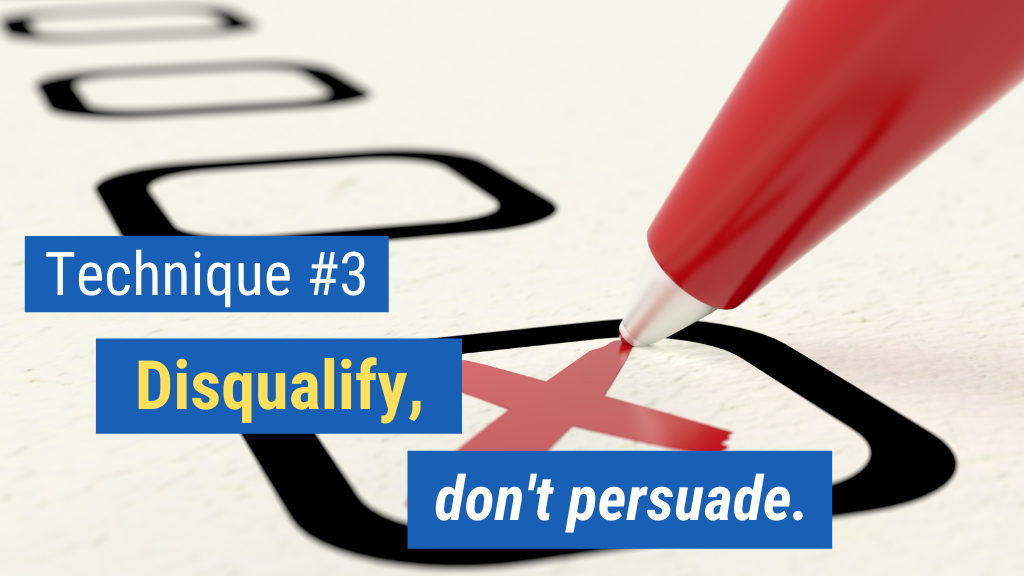
My core passion in sales is helping people improve at selling by using a disqualification mindset, as opposed to a persuasion mindset. Your prospects don’t want to be persuaded. Chances are, they’re pretty smart people who can’t just be talked into to buy something with a bit of fancy language and industry jargon.
Instead, you want to disqualify your prospects. What that means is that you want to start with a “doctor’s mindset” where you’re thinking, “What challenges is this prospect facing? Can I solve those challenges? Is this person a fit for what I have to offer?” In order to answer those questions early on in a sales conversation, you must ask a series of questions to ultimately determine whether or not they’re a fit. And if they’re not a fit, then move on.
The problem is that so many salespeople are trying to sell to everyone, so they’re not moving on from those people who aren’t a fit. This is a huge waste of time and limits the energy and resources they can spend on actual ideal prospects who are a great fit for what they sell. So be willing to disqualify your prospects.
Best Sales Training Techniques #4: Solve challenges.

In addition to being one of the best sales training techniques you can learn, this is a really important mindset and tactical distinction in selling. So many salespeople today are still focusing on the features and benefits of their offerings. The reality is that your prospects don’t care about any of that. All they care about is whether you can solve their challenges.
If you can articulate your prospect’s challenges better than they can, your value and the value of your offering will go through the roof. Then, with your authority already established, you can focus on demonstrating how you can actually help the prospect solve their specific challenges. That’s how you dive deep to engage your prospects in a powerful, meaningful way.
Sales Training Technique #5: Know your next step.
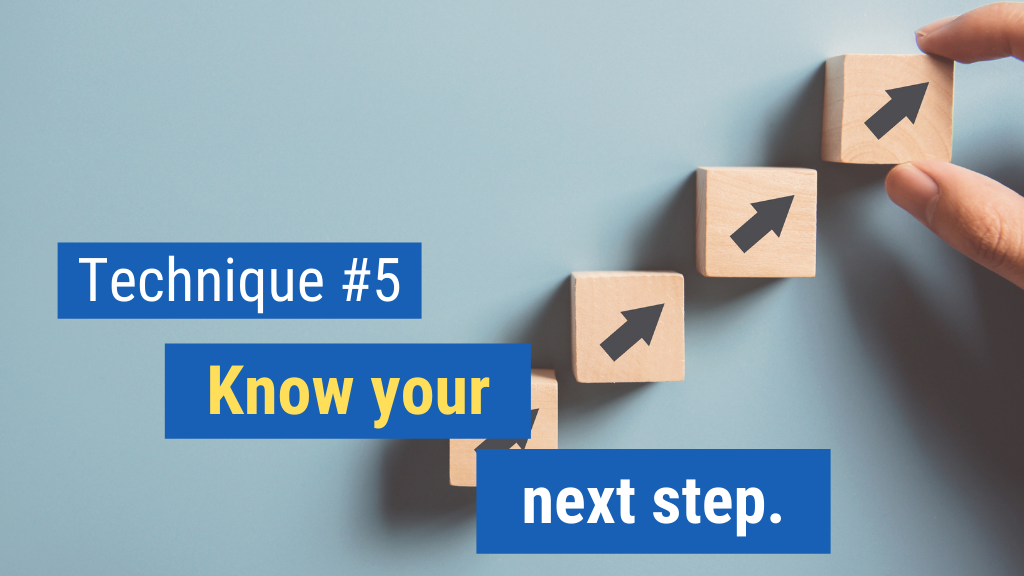
Knowing your next step is a real distinction between A performers and B and C performers. A performers are just completely obsessed with establishing a next step with their prospects. Meanwhile, B and C performers—even if they’ve done a good job in the sales process up until the end—tend to go right into “follow-up” mode.
If you find yourself following up on your prospects a lot, it means that you’re doing something wrong.
You should always be scheduling a next step when you’re in the current selling situation with the prospect. Don’t just leave it for another day to follow up with a random phone call. Instead, schedule it in the calendar. Make sure an actual calendar invite goes out while you still have the prospect on the line.
I’ll say it again: Never follow up. Instead, put yourself in a position where you don’t have to follow up, because you already have a scheduled meeting or a scheduled phone call in place. And by the way, if your prospect is unwilling to schedule a next step, that’s good information. This tells you that the prospect clearly doesn’t want what you have. Time to move on.
Technique #6: Lead gen is not about hope.

Again, this is a real distinction between top performers and everyone else. Top performers have lead gen totally in the bag. They aren’t just winging it. They can easily answer the following questions: Where are your leads coming from? Are you sending out emails? How many, and when? Are you making prospecting calls? How many, and when? And on and on.
You must have a good strategy when it comes to lead gen. It cannot be left up to hope. Which is why I would be remiss not mention that you must have a clear lead generation strategy. This is one of the best sales training techniques you absolutely must master to succeed in sales.
Best Sales Training Techniques #7: Always follow a process.
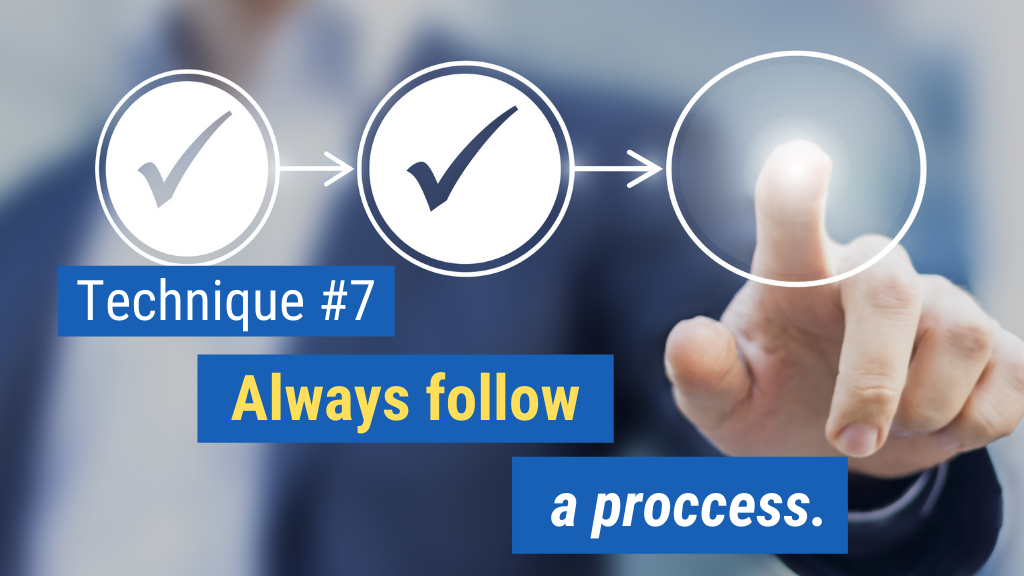

I’m pretty much obsessed with helping salespeople become more process-driven. The more process-driven you are, the more successful you’ll be in sales. If you’re just winging it and figuring it out as you go, you’re going to struggle. You must have a sales process in place.
The more consistently you follow your sales process, the more effective you’ll be at selling. Whether you use my Sales Insights Methodology or another process, it doesn’t matter. What matters is that you have a process in place that you believe in; one that works, and that you follow step by step.

So, there you have it. Now you’ve gone through this quick course on the 7 best sales training techniques. Which of these quick tips did you find most useful for your own selling process? Be sure to share your thoughts in the comments section to join the conversation.
Enjoyed this article? Please share away!

Get instant access to our free sales training:
Why Prospects Push Back on Price, Give 'Think-It-Overs,' and Ghost in Sales Until They Meet a Sales Superstar Who Is Following These 7 Simple Keys

About the Author Marc Wayshak
Marc is is the best-selling author of three books on sales and leadership, including the highly acclaimed titles Game Plan Selling, The High-Velocity Sales Organization and his forthcoming book, Sales Conversations, Mastered.
Marc is a contributor to Inc, HubSpot, Fast Company, Entrepreneur Magazine, and Huffington Post Business. He also hosts a popular YouTube channel on sales strategy with over 103,000 subscribers.
Marc helps thousands of people his data-driven, science-based approach to selling that utilizes all the best tools available to sales organizations today.



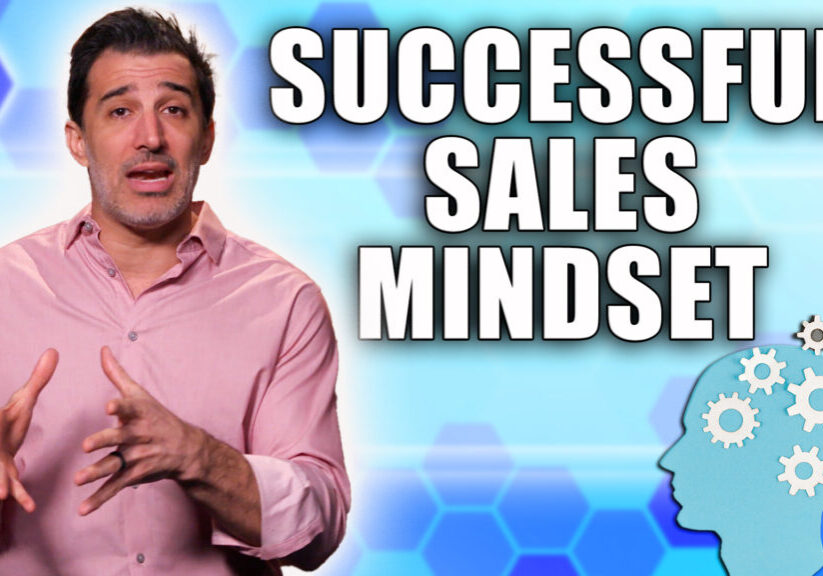
![How-to Sell to Power [C-Suite Sales Must-Knows!] How to Sell to Power [C-Suite Sales Must-Knows!]](https://salesinsightslab.com/wp-content/uploads/bb-plugin/cache/How-to-Sell-to-Power-C-Suite-Sales-Must-Knows-1024x576-landscape-7a52c541b28a7b772ad9e1010d8240be-.jpg)

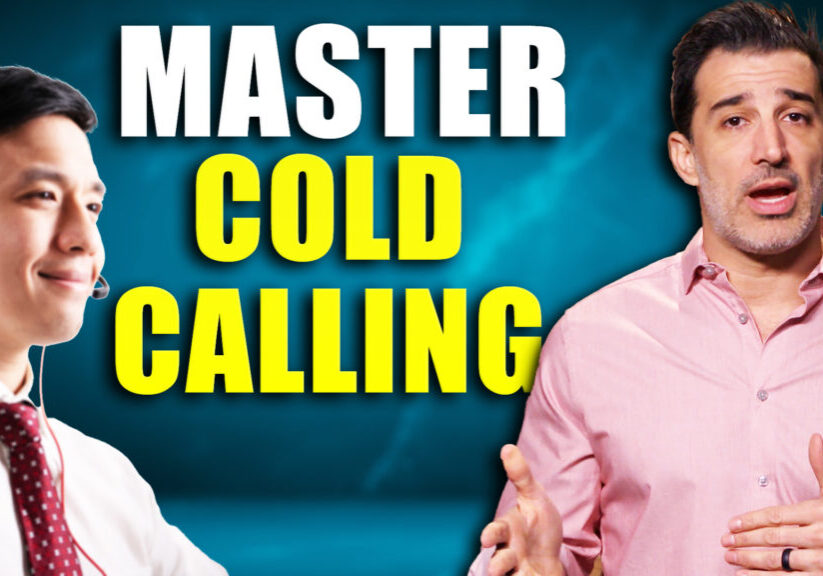
![The Absolute Best Way to Start a Sales Conversation [WITH ANY PROSPECT] The Absolute Best Way to Start a Sales Conversation [WITH ANY PROSPECT]](https://salesinsightslab.com/wp-content/uploads/bb-plugin/cache/The-Absolute-Best-Way-to-Start-a-Sales-Conversation-WITH-ANY-PROSPECT-1024x576-landscape-be9d9379ab94d9f71b5bfeed42246a84-.jpg)